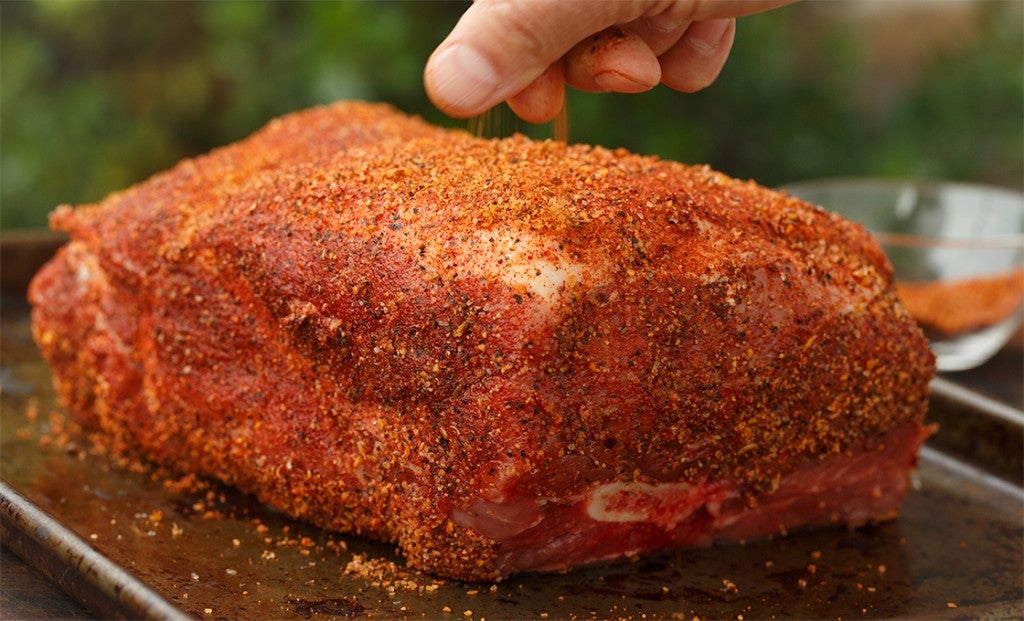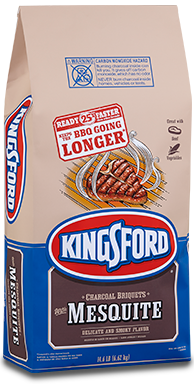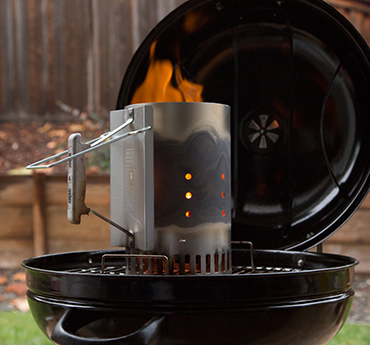- Cut:Shoulder
- When it's Done:88°C
Pork shoulder might seem intimidating, but it’s the easiest of the BBQ Big Three (brisket, ribs and pulled pork) to master and is a great way to hone your smoking skills. All you need to do is follow our five simple steps using Kingsford® Charcoal and Kingsford® Wood Chips.
-

1Prepping your cooker for smoking
If you’re using a kettle-type grill, use an indirect technique such as the snake method to set up your grill. For backyard smokers, set it up for an eight-hour smoke. Learn more about smoking here. With either method, soak a few handfuls of Kingsford® Wood Chips (Hickory is especially good) for about 30 minutes in warm water before placing on top of the coals. -

2Prepping the pork shoulder
Start with a pork shoulder in the seven-to-eight-pound range. Trim off the excess “fat cap,” but leave a 1/8-inch-thick layer of fat to keep the meat moist during the long cooking process. Sprinkle on a few tablespoons of rub, spreading it evenly around the pork shoulder. -

3Smoking the pork shoulder
Place the pork shoulder fat side up on the top rack, cover with the lid, and bring the temperature up to a constant 107°C to 121°C, using the vents to regulate the temperature. If your grill doesn’t have a temperature gauge, you’ll need to purchase a digital barbecue thermometer. Check the internal temperature of the grill every hour. Add more charcoal and soaked wood chips as needed to maintain temperature and smoke. -

4Check for doneness.
The ideal temperature for sliced pork shoulder is 88°C. For pulled pork, the ideal temperature is 96°C. The high internal temperature allows collagen to break down, making the meat very tender. Keep in mind that the pork shoulder will continue to cook internally by 10 degrees even after it’s been removed from the grill. When you’re sure it’s done, remove the shoulder from the grill using clean barbecue gloves, cradling the meat to prevent it from falling apart in your hands. Tongs won’t work well because the meat will fall apart. -

5Rest, then pull or chop.
After the pork shoulder comes off the grill, let it rest for at least 15 minutes to allow the juices to settle back into the meat. Remove any large chunks of cooked fat. There are several ways of serving pork shoulder. The most common way is to “pull” it apart, using two forks to pull and separate the strands of meat. Another way is to slice, then chop it. Either way, be sure to mix the crusted outer meat with the inner meat so that the varying textures and flavors are distributed evenly.

Slather your pork shoulder with olive oil or yellow mustard to help the rub adhere to the meat. (You likely won’t pick up the mustard flavor later.)

Resist the temptation to open the lid while smoking meats. If you’re lookin', you’re not cookin'.

Pork shoulder is also called "pork butt." In this case, the term "butt" doesn’t refer to the rear section of a pig.

Kingsford® Charcoal with Mesquite
See details


